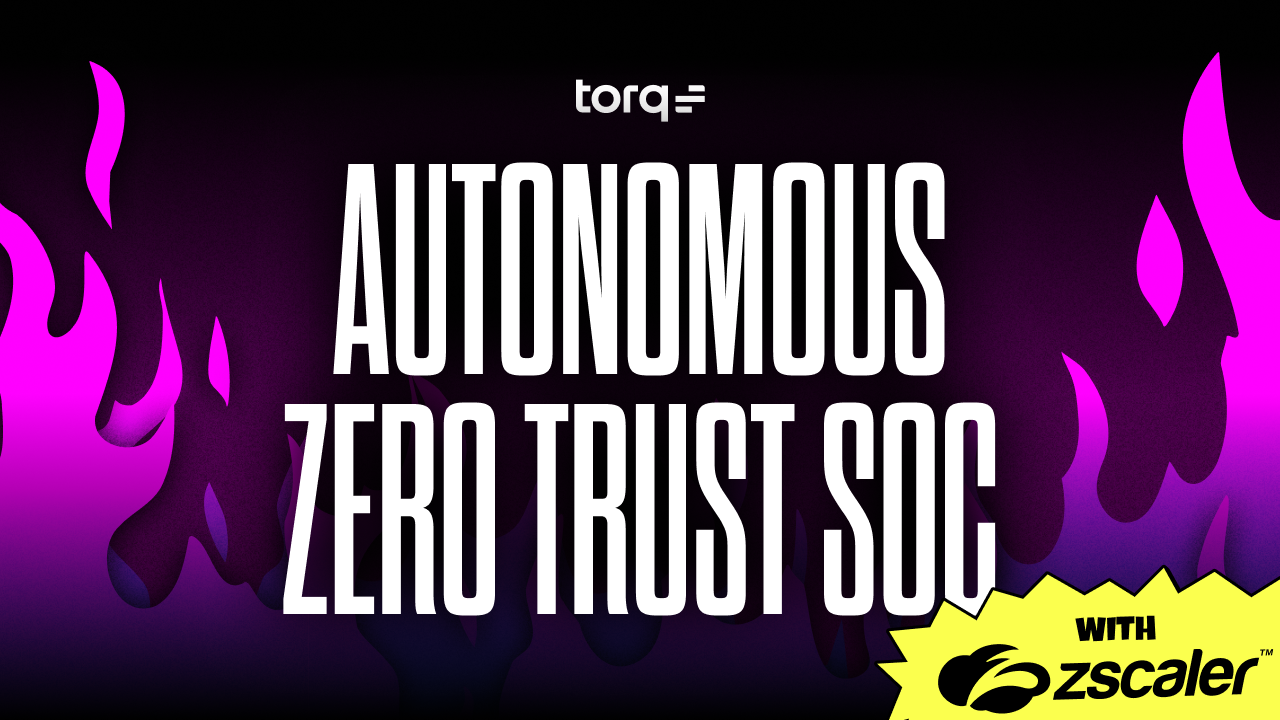Contents
Get a Personalized Demo
See how Torq harnesses AI in your SOC to detect, prioritize, and respond to threats faster.
In cybersecurity, collaboration isn’t just helpful — it’s mission-critical. Evolving threats, hybrid infrastructure, and growing operational complexity have forced organizations to rethink how their teams work together. That’s where SecOps, ITOps, DevOps, and DevSecOps come into play.
These terms may sound similar. And they are — to a degree. But they have different areas of focus and philosophies. This guide will break them down, show how they overlap, and explain why automated SecOps is essential to a modern security strategy.
What is SecOps?
SecOps (Security Operations) is the fusion of IT operations (IT Ops) teams and security teams, processes, and technologies. It transforms security from a siloed afterthought into an integrated, continuous part of infrastructure management and incident response.
Unlike traditional models where IT and security operate independently, SecOps encourages real-time collaboration, shared visibility, and automation-powered workflows. The result is faster detection, smarter triage, and reduced risk.
At the heart of SecOps is the SOC (security operations center), which can be physical, virtual, or hybrid. The SOC centralizes collaboration among security analysts, IT operations engineers, system admins, and others, all aligned under the CISO.
Why SecOps Matters
Security complexity is exploding. The average enterprise juggles hybrid infrastructure, sprawling cloud environments, and a distributed workforce. Meanwhile, attackers are faster — and smarter — than ever.
Siloed security and IT operations can’t keep up. Digital SecOps helps you scale. It reduces response times, minimizes risk, and improves visibility by aligning security into other parts of the business.
SecOps vs. ITOps
SecOps connects security and IT operations by aligning their workflows and priorities, not by merging teams.
Traditionally, ITOps and security teams operated on parallel tracks. ITOps focused on maintaining infrastructure, keeping systems running, and resolving performance issues, while security focused on identifying and responding to threats. They might’ve shared a Slack channel, but rarely a strategy. That separation created gaps, and attackers took advantage.
SecOps closes those gaps. It ensures security is embedded into every layer of IT operations, from provisioning and deployment to monitoring and response. It’s not about turning IT teams into security experts or vice versa — it’s about building stronger collaboration.
SecOps vs. DevOps
DevOps is a collaboration between developers and IT operations teams that ensures developers understand the needs of ITOps when they write software and that ITOps teams understand what developers intend for software to do when they manage it.
While SecOps and DevOps serve different functions, they share a common goal: breaking down silos between teams to improve agility, speed, and resilience across the organization. Here’s what they have in common:
- Both break down silos between teams to improve efficiency and scalability
- Both emphasize automation, real-time communication, and shared accountability
- Both are cultural philosophies more than strict operational frameworks
But the difference lies in focus:
- DevOps = Developers + ITOps
- SecOps = Security + ITOps
In short: DevOps is about velocity. SecOps is about visibility. And both benefit from strong security automation.
Where DevSecOps Fits In
You can’t really talk about ITOps, SecOps, and DevOps without hitting on DevSecOps — the (relatively) new kid on the block that pulls development, security, and operations into a single, streamlined, collaborative model.
In DevSecOps, security “shifts left”, meaning it’s embedded earlier in the development lifecycle, not bolted on at the end. Security testing, threat modeling, and policy enforcement become part of the CI/CD pipeline.
With DevSecOps, developers, IT, and security collaborate from day one. Bugs are fixed before they become breaches, and vulnerabilities are squashed in staging rather than discovered in production.
Comparing ITOps, DevOps, SecOps, and DevSecOps
| ITOps | SecOps | DevOps | DevSecOps | |
| Primary Focus | Managing IT infrastructure and services | Security + IT operations | Development + IT operations | Embedding security into DevOps pipelines |
| Goal | Ensure performance, uptime, and support of systems | Streamline threat detection and incident response | Accelerate software delivery and quality | Shift security left in development workflows |
| Key Stakeholders | IT admins, system engineers | Security teams + ITOps | Dev teams + ITOps | Dev, Sec, and Ops teams working as one |
| Collaboration Model | Operates in silos or supports other teams | Security works closely with IT operations | Developers and OTOps work in tandem | Fully integrated cross-functional security practices |
| Examples of Tools | ServiceNow, Nagios, Puppet | Torq Hyperautomation platform, EDR/XDR, SIEM | Jenkins, Kubernetes, Terraform | SAST, DAST, IaC security tools |
| Philosophy | Keep the lights on, ensure uptime | Proactive threat mitigation | Move fast, reduce friction between Dev and Ops | Secure every commit, shift security left |
Collaboration Isn’t Optional
At the end of the day, whether you’re operating under the banner of ITOps, SecOps, DevOps, or DevSecOps, one principle remains constant: collaboration is everything.
Security doesn’t happen in isolation. It happens when developers, IT, and security engineers have shared visibility, shared tools, and shared responsibility. When everyone’s aligned, security becomes part of the everyday workflow — not an afterthought or a bottleneck.
Scaling Through Collaboration with Torq
Torq’s no-code SOC automation platform is purpose-built to connect the dots across ITOps, security, and development. It breaks down barriers between teams with collaborative, transparent workflows that streamline communication, reduce handoff friction, and automate everything. Here’s how Torq emphasizes collaboration:
- Unified workflows: Bring security, IT, and engineering together in a single automation layer with shared playbooks.
- No-code + Deep customization: Anyone can build and execute powerful workflows using natural language, prebuilt templates, or drag-and-drop tools.
- Real-time collaboration: Triage, investigate, and remediate cases through chat tools like Slack and Teams.
- Extensible by design: Torq integrates with your entire security stack and scales with your business.
By embedding security into day-to-day operations and giving every stakeholder access to automation, Torq turns collaboration into a force multiplier.
See how data security leader BigID increased SecOps efficiency by 10x with Torq Hyperautomation.







